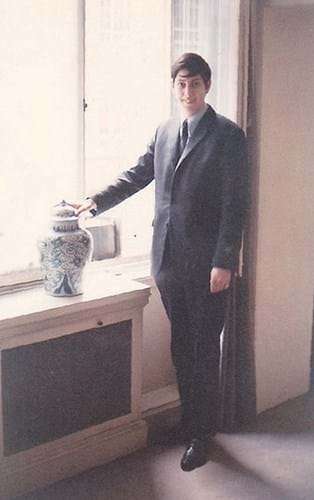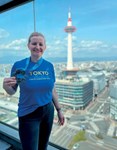Richard started his career at Spink and Sons, where his grandfather Frank Barker had been an early specialist in Chinese art.
It was at his grandfather’s funeral that the head of Spink’s Oriental department, Adrian Maynard, suggested to the 16-year old Richard that he apply for a job.
Hating school, Richard wasted no time and took up a position as a porter at Spink the following Monday, June 1, 1966 – the year that coincided with the company’s 300th anniversary.
In the time-honoured tradition of working his way through the ranks, Richard honed his knowledge in ceramics (both Chinese and Japanese), jades and Japanese netsuke and inro.
Department heyday
Richard’s boss, Adrian Maynard, was a man of enormous drive who was to oversee the heyday of Spink’s Oriental department.
Maynard was undoubtedly the most flamboyant character to take charge of the Asian art department, which he took to its heights of its success. He was, Richard confirmed, a great expert and an exacting but fair boss.
Maynard believed firmly “that a dealer, whose fortune and good name depends on knowing what to buy, has a much greater responsibility to be right about the objects that come into his hands than, say, an academic, who never handles large sums of money”.
Spink’s first catalogue dedicated solely to netsuke and written by Richard was published in 1976, featuring a fine Okatomo deer on its cover.
This was a time when the netsuke market in London was at its height and the opening of a selling exhibition would be preceded by a snaking queue of impatient buyers, some of whom would have camped out all night on the pavement in King Street in order to be the first through the doors.
Comprehensive catalogue
Richard, together with Lawrence Smith, was also responsible for writing the first catalogue of the British Museum’s netsuke, which still offers a comprehensive overview of the collection.
Richard also spent many happy hours studying Japanese and Chinese ceramics with Oliver Impey of the Ashmolean Museum, becoming one of the acknowledged experts in the field.
After a spell at Barry Davies Oriental Art, Richard moved to the Isle of Wight where he continued to deal in ceramics, making annual trips to Japan in the search for new treasures.
He is survived by his wife and two sons.
From Rosemary Bandini












